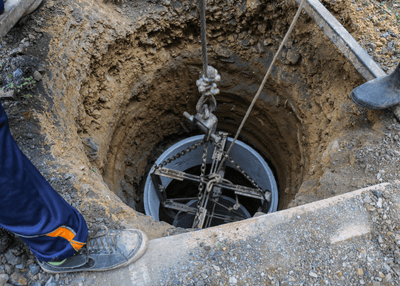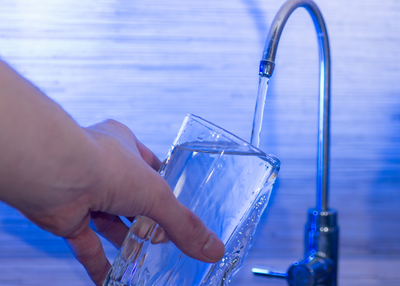Roughly 15 percent of Americans get their tap water from private wells, and this percentage can rise to 40% in rural states like Maine and Vermont. It's no surprise that we receive a lot of questions from people with wells who are are concerned about water quality.
1. Getting A Well “Checked” Is Not The Same As Comprehensive Water Testing
There is a misconception that if someone gets their private well “checked,” it will reveal water quality problems. Unfortunately, that’s not the way it works. A basic water screening has a lot of "blind spots" and gives no information about levels of lead, arsenic, chromium 6, mercury, or VOCs unless you test specifically for those chemicals. Some states have certain testing requirements, but the scope of testing varies from state to state, and most states do not require comprehensive testing. Many banks require that certain water tests be conducted before they will issue a mortgage, but the goal of this testing is often to ensure that there are no faulty systems in the home, not to protect the health of the residents.
Bottom line: The well's owner is responsible for having tests run. Don't assume that the tests that were done as part of the home buying process were comprehensive.
2. Well Water Contamination Often Comes From Natural Sources, Not Humans
Some private well owners are surprised to learn that they have contaminated water, because there are no obvious contamination sources nearby. This is because some contaminants (like arsenic) can occur naturally groundwater at unsafe levels.
3. Well Water Is Often Corrosive & Can Leach Lead From Plumbing
The lead crisis in Flint put a spotlight on the fact that corrosive water can leach lead from pipes, soldered joints, and plumbing fixtures. Unfortunately, a lot of well owners don't realize that well water can be inherently corrosive, so if a their plumbing predates 2014, (when lead-free standards were fully adopted for home plumbing components) there is potential for lead to leach into the tap water.
4. Contaminant Concentrations (And Recognized Safe Levels) Change With Time
We cannot emphasize enough that people should get their wells tested on a regular basis, because contaminant concentrations and thresholds for “safe” water both change over time.
For example, we commonly hear homeowners in the Northeast and Southwest tell us that they tested their water for arsenic "a few years ago" and everything was fine. They are often surprised to learn that EPA recently lowered the concentration of arsenic that is considered to be “safe." The maximum contaminant level (MCL) used to be 50 parts per billion but was changed to 10 parts per billion a few years ago. This means that many wells with arsenic concentrations that were considered “safe” by EPA a few years ago are now considered unsafe.5. Private Well Owners Are Responsible For Monitoring Their Water Quality, Not EPA
Private wells are not regulated by EPA or State Regulators, so the owners (or prospective owners) are responsible for all well water quality testing. However, figuring out which tests to do and making sense of the results can be confusing. Some states have guidelines and recommendations, but even these can be confusing and contradictory.
Often times, prospective home owners turn to a real estate agent for advice on water quality testing, but we often hear from people who received terrible advice. Most of the time, the mistakes are honest, but there are times when it looks like the agent was trying to facilitate a quick sale.
Ultimately, ensuring water quality of a private well is the individual responsibility of the well’s owner or prospective owner. In support this responsibility, we encourage people to take advantage our Technical Support Team’s “Help At All Costs” policy, and lean on us to provide guidance on which lab to select in your area, which tests to run, and to help interpret the results. This free (no obligation service) can be reached by emailing us (support@hydroviv.com) or by using the live chat function on this page.
We do not have financial agreements or arrangements with water quality test labs, and we do not “over-prescribe” testing.
Other Great Articles That We Think You'll Enjoy:
5 Things You Need To Know About Chromium 6 In Drinking Water
Why TDS Meters Don't Tell You Anything About Lead Contamination
Does Boiling Or Freezing My Water Purify It?





